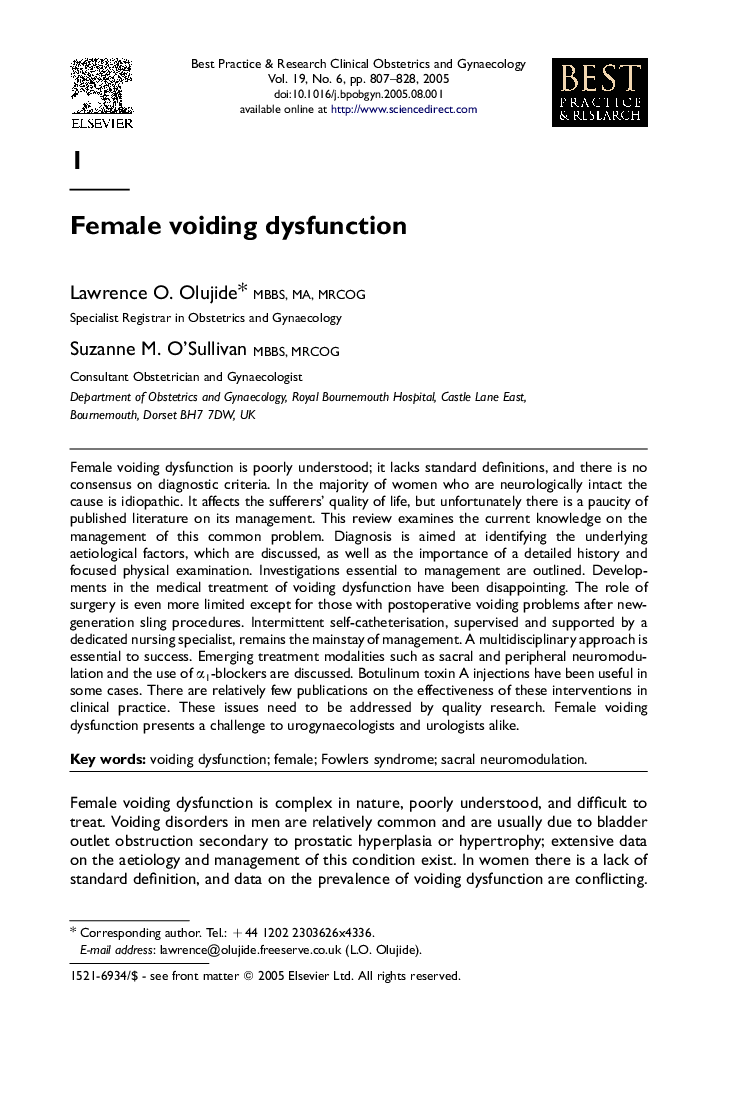| Article ID | Journal | Published Year | Pages | File Type |
|---|---|---|---|---|
| 9315833 | Best Practice & Research Clinical Obstetrics & Gynaecology | 2005 | 22 Pages |
Abstract
Female voiding dysfunction is poorly understood; it lacks standard definitions, and there is no consensus on diagnostic criteria. In the majority of women who are neurologically intact the cause is idiopathic. It affects the sufferers' quality of life, but unfortunately there is a paucity of published literature on its management. This review examines the current knowledge on the management of this common problem. Diagnosis is aimed at identifying the underlying aetiological factors, which are discussed, as well as the importance of a detailed history and focused physical examination. Investigations essential to management are outlined. Developments in the medical treatment of voiding dysfunction have been disappointing. The role of surgery is even more limited except for those with postoperative voiding problems after new-generation sling procedures. Intermittent self-catheterisation, supervised and supported by a dedicated nursing specialist, remains the mainstay of management. A multidisciplinary approach is essential to success. Emerging treatment modalities such as sacral and peripheral neuromodulation and the use of α1-blockers are discussed. Botulinum toxin A injections have been useful in some cases. There are relatively few publications on the effectiveness of these interventions in clinical practice. These issues need to be addressed by quality research. Female voiding dysfunction presents a challenge to urogynaecologists and urologists alike.
Related Topics
Health Sciences
Medicine and Dentistry
Obstetrics, Gynecology and Women's Health
Authors
Lawrence O. (Specialist Registrar in Obstetrics and Gynaecology), Suzanne M. (Consultant Obstetrician and Gynaecologist),
